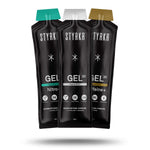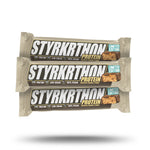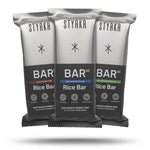Is it best to rest or workout when sore? Here’s what you need to know.
So, you went hard yesterday in your training session or haven’t worked out in a while, and today, you’ve woken up, and even the smallest of movements hurt.
You’ve got DOMS, known as delayed onset muscle soreness. It’s completely normal and is how your muscles respond to the training stimulus. In many ways, it’s a sign of improvement (as long as you don’t have permanent muscle soreness and fatigue).
And while you can’t prevent it (unless you train less hard, which is not ideal), you can do several things to speed up muscle recovery.
In this article, we cover:
- When should you rest or workout when sore
- The best exercises for DOMS
- What causes sore muscles
- How long DOMS lasts for
- How to recover quickly from DOMS
Should you rest or workout when sore?
Whether you should rest or workout when sore depends on the severity of your DOMS and the workout you have planned.
If your DOMS is mild, light activity such as an easy jog, swim, or cycle will increase blood flow to speed up recovery. On the other hand, if your muscles are very sore and painful to touch, you’re better off resting.
If you also feel general fatigue and tiredness, this is another indicator that you should take it easy.
Best low-impact workouts for sore muscles
If you’re going to workout, there are various low-impact activities that can help increase blood flow to the muscles to flush out harmful toxins and waste products to speed up recovery.
Examples of low-impact workouts for sore muscles include:
- Swimming
- A slow run or jog
- Cycling (stationary or outside)
- Yoga
- Stretching
- Walking
What causes muscle soreness after a workout?
Muscle soreness is caused by damage to the muscle fibres—small micro-tears that occur during intense or unfamiliar physical activity. For example, if you’ve never squatted before using a barbell and decide today is the day, you will likely have DOMs tomorrow.
The small micro-tears are an inflammatory response, which causes muscle soreness. Your muscles then repair (and sometimes grow bigger and stronger). Typically, muscle soreness (or DOMS) peaks around 24-72 hours after a workout.
You will notice that if you’ve been exercising for a while, it’s less likely that you’ll get severe soreness from your regular workouts. This is because your body is used to the intensity.
But if you add a new exercise (such as front squats) or run or cycle at a more difficult intensity than usual, you’re more likely to get DOMS.
Let’s use the example of a marathon runner. Before a marathon, the furthest they have run is usually 18 ish miles at a slow pace. On marathon day, they run further and faster than usual. The result? DOMS the following day(s).
Are sore muscles a good sign?
Sore muscles are often a good sign that you are sufficiently challenging your muscles. But if you are constantly sore and fatigued, this could indicate that you’re not recovering properly between sessions.
Despite this, do not rely exclusively on muscle soreness to indicate a good workout. Your muscles won’t always get sore, so take into account other factors, such as:
- How the workout felt (was it easier than last time)
- How fatigued you feel (or if you feel any fatigue at all)
- If you lifted more weight or performed more repetitions
- If you averaged a quicker pace than previously
Sore muscles are a little different for endurance athletes vs. weight lifting and bodybuilding—but we get into that later in this article.
How long does DOMS last?
DOMS typically last anywhere from two to five days. This depends on the intensity, type of exercise, and how good your recovery is (including sleep, nutrition, foam rolling, etc.).
DOMS for endurance athletes
The same principles of muscle soreness apply to endurance athletes. However, while DOMS in bodybuilding, for instance, is often a sign that the muscles will adapt and grow bigger and stronger, endurance sports often result in more efficient muscles vs. bigger muscles.
Think about it: have you ever seen a marathon runner with massive legs? Probably not.
Despite this, managing DOMS for endurance athletes is critical. If you’re constantly sore, you will struggle to get the most out of your training and risk overtraining, burnout, and general fatigue. These, as you likely know, are not signs of success for an endurance athlete.
How to recover from DOMS faster
So, how can you recover from DOMS faster to get back to your usual training?
There are numerous things you can do to improve recovery, including prioritising nutrition to wearing compression gear and foam rolling. We explain each of these methods in more detail below.
Eat enough protein to support muscle repair

After resistance training, muscle protein synthesis increases for a period of at least 24 hours. A similar response happens after aerobic exercise, but the type of protein that is synthesised is slightly different, as stated by the American College of Sports Medicine.
Even when muscle hypertrophy (building bigger muscles) is not the goal, well-timed protein following exercise and ensuring you meet the recommended protein intake requirements helps maximise the metabolic adaptation to training.
So how much protein should you eat? To support metabolic adaptation and muscle repair and remodelling, you should aim for 1.2 to 2.0g/kg a day. Higher intakes of protein can be done for short periods during intense bouts of exercise, such as multi-day events or hectic training schedules that balance weight lifting, and running and cycling, for example.
For endurance athletes, in particular, you want to eat plenty of carbohydrates to replenish your glycogen stores. This will also improve recovery from prolonged exercise and initiate muscle tissue repair and adaptation, as stated in this journal article.
Take a hot bath with Epsom salts
There are limited studies on Epsom salts, but many athletes swear by their ability to reduce muscle soreness.
But, we do know that a hot bath improves circulation and increases blood flow to the muscles, which may reduce inflammation and alleviate muscle soreness.
Don’t soak too long, however. Limit your hot bath to no more than 20 minutes for the maximum benefit. You may also want to consider an ice bath to reduce swelling and flush out waste products.
Hydrate and replace lost electrolytes
Inadequate hydration slows down your recovery after exercise.
In the body, nutrients like amino acids—known as the building blocks of protein—are transported in the bloodstream, and blood is primarily water. Without proper hydration, you slow down the body's process to effectively heal micro tears, which cause DOMS.
Furthermore, electrolytes are essential for proper cell function and energy production. A lack of electrolytes influences everything from muscle relaxation to inflammation and the muscle repair process.
A well-balanced diet should typically be plenty to sustain normal electrolyte levels. However, if performing long bouts of exercise or exercising in the heat, consider adding electrolytes, such as SLTO7 to your training sessions to prevent muscle cramping and to sustain performance.
Wear compression gear
Wearing compression garments, such as socks, arm sleeves, or tights can help reduce DOMS and improve the recovery of muscle function, as found by a 2017 study.
Despite the above results, compression gear should be combined with other methods to improve recovery, such as foam rolling and light aerobic exercise to increase blood flow and circulation to the sore muscles.
Foam roll

A 2014 study examined foam rolling after intense exercise and its effect on muscle soreness and DOMS.
Results showed participants who foam-rolled had less soreness in the following days compared to those who did not foam roll. Regular foam rolling increases blood flow to the muscles and can help alleviate muscle stiffness, relieve tightness, and ultimately, improve the recovery process.
Perform light activity to increase circulation
Light aerobic activity, such as a slow walk or jog, swimming, or cycling, will increase circulation and blood flow to sore muscles.
This helps remove waste products from the muscles for improved recovery and less soreness.
Don’t overdo it, though. A short 15-30 minute bout of light exercise is plenty.
Rest
Finally, it’s important to know when to rest. You can be the most motivated person in the world, but if you don’t know when and how to rest you hinder your recovery and overall progress.
As previously mentioned, if you feel fatigued and run down as well as sore, then a rest day is recommended.
At the very least, consider a compromise and do light activity such as a walk and foam rolling.
FAQs
Should I skip a workout if I’m sore?
If your soreness is mild, you can try a low-impact workout such as a walk, light jog or cycle, or swim.
Is being sore a good sign of muscle growth?
Muscle soreness can be a good sign of muscle growth. But if you constantly feel sore, this could indicate overtraining and fatigue.
Does soreness mean you’re building muscle?
Muscle soreness does not necessarily mean you’re building muscle, but it is a sign that you’re on the right track. Ensure to include progressive overload with proper nutrition to get the best results.



